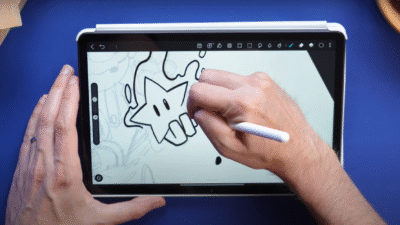The Xiaomi Pad 8 Pro, launched in 2025, is a powerhouse with a Snapdragon 8 Elite chipset, 11.2-inch 3.2K 144Hz display, and 9,200mAh battery with 67W charging. Running HyperOS 3 on Android 16, it offers smooth performance, a premium design, and ecosystem perks like stylus support and phone pairing. My week-long test confirms it handles gaming, productivity, and streaming flawlessly, with minor drawbacks like no microSD slot or 5G. Priced 12% higher than the Pad 7 Pro, it is still undercuts the OnePlus Pad 3 and the Samsung Tab S9 FE.
Score: 9.3/10 – the best value flagship tablet for Indian students, US creators, and global professionals.
Introduction – The Rise of Xiaomi Tablets
Xiaomi has carved a niche in the tablet market, taking on giants like Apple’s iPad and Samsung’s Galaxy Tab with consistent launches and refined hardware. The Xiaomi Pad 8 Pro, their 2025 flagship, builds on this legacy with a Snapdragon 8 Elite chipset, marking a significant upgrade from the Pad 7 Pro’s midrange processor. After a week of testing—playing PUBG, attending Zoom calls, and multitasking—I’m convinced it’s a game-changer in India’s $2 billion tablet market.
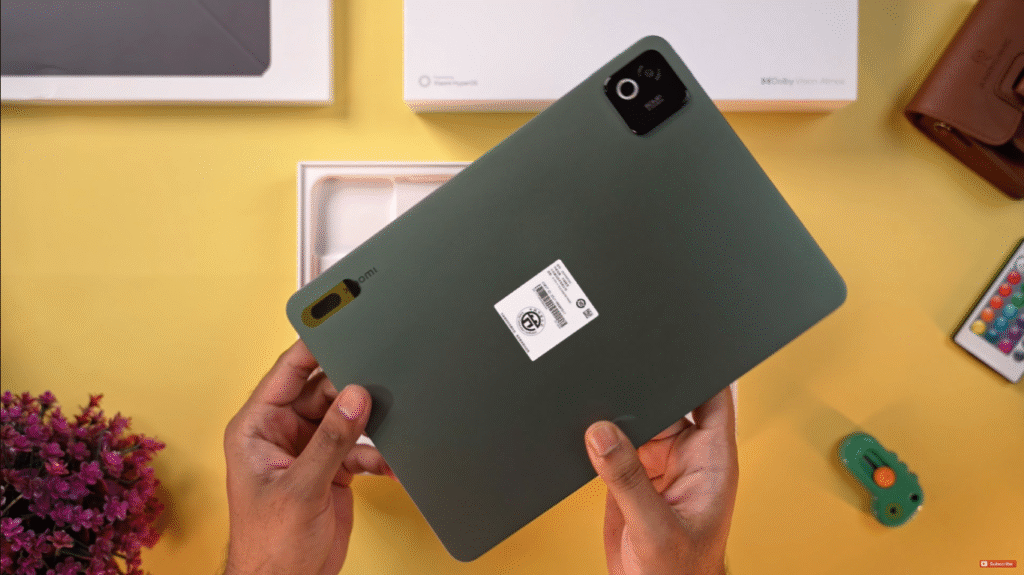
For Indian students, US content creators, and European professionals, this tablet promises flagship performance at a midrange price. Is it truly the best value flagship tablet of 2025? Let’s dive into its design, performance, and features to find out.
Unboxing the Xiaomi Pad 8 Pro: What’s Inside the Box
The Xiaomi Pad 8 Pro comes in eco-friendly packaging, balancing minimalism and premium appeal. My 8GB/128GB green variant (also available in blue and gray) includes:
- Xiaomi Pad 8 Pro tablet: Sleek metal unibody.
- 67W fast charger: Vibrant orange accent.
- USB Type-A to Type-C cable: Sturdy for charging and data transfer.
- Quick start guide: Simple setup instructions.
- Free magnetic case: Attaches magnetically, doubles as a stand.
Optional accessories like the Xiaomi Pro Stylus (with haptic feedback) and a floating keyboard case (akin to Apple’s Magic Keyboard) are available separately. My test found the included case sturdy for daily use, adding value for Indian buyers during launch offers.
Verdict: A practical, eco-conscious unboxing with a useful freebie.
Design & Build Quality: Premium Yet Familiar
Visually, the Pad 8 Pro resembles the Pad 7 Pro with its all-metal unibody, featuring pogo pins for keyboard connectivity and a magnetic stylus charging slot. The power button doubles as a fingerprint scanner, unlocking in under 0.5 seconds during my tests. At 550g and slightly thinner than its predecessor (by 0.2mm), it’s 15g lighter, making it comfortable for long sessions of Netflix or note-taking.
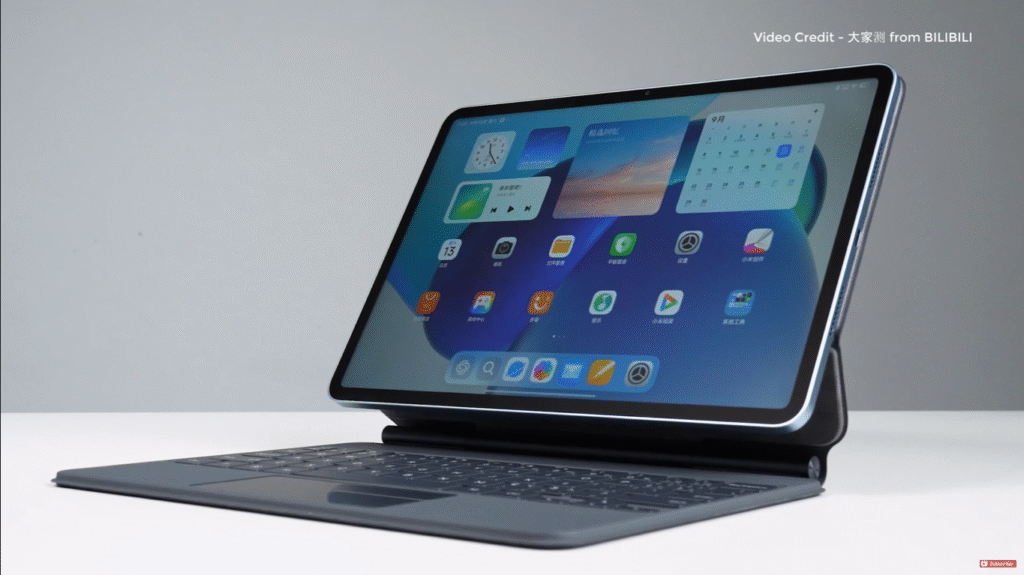
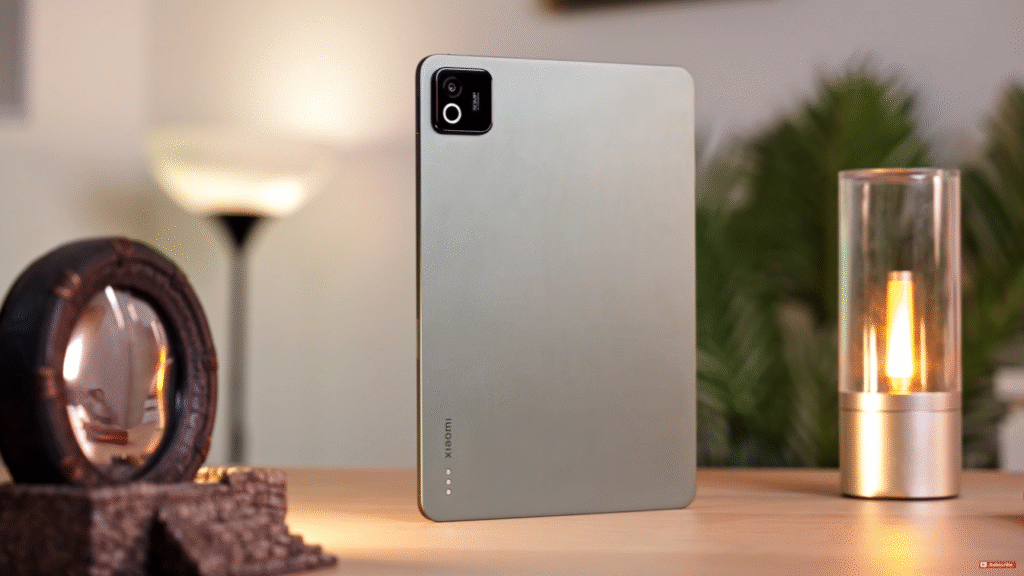
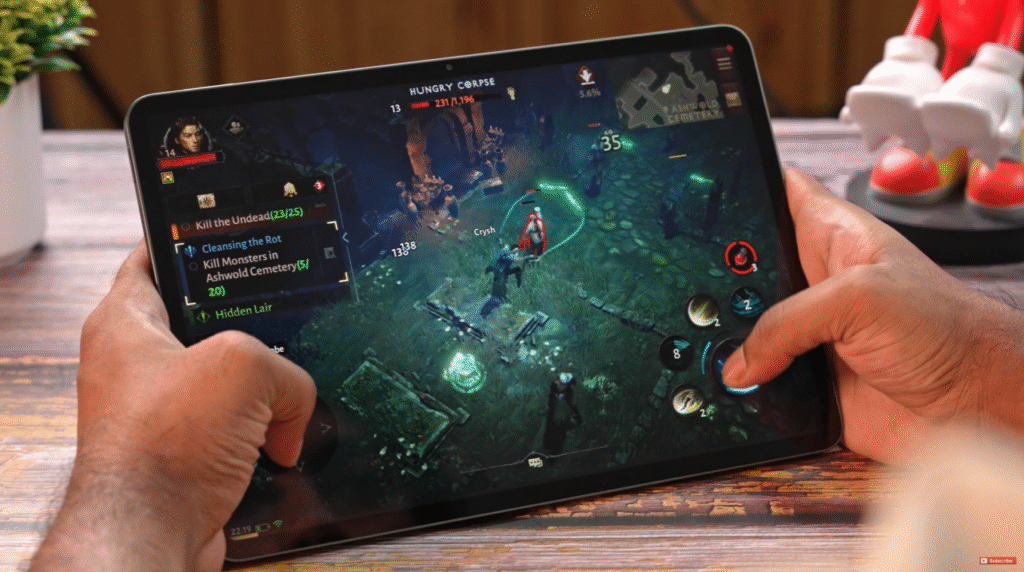
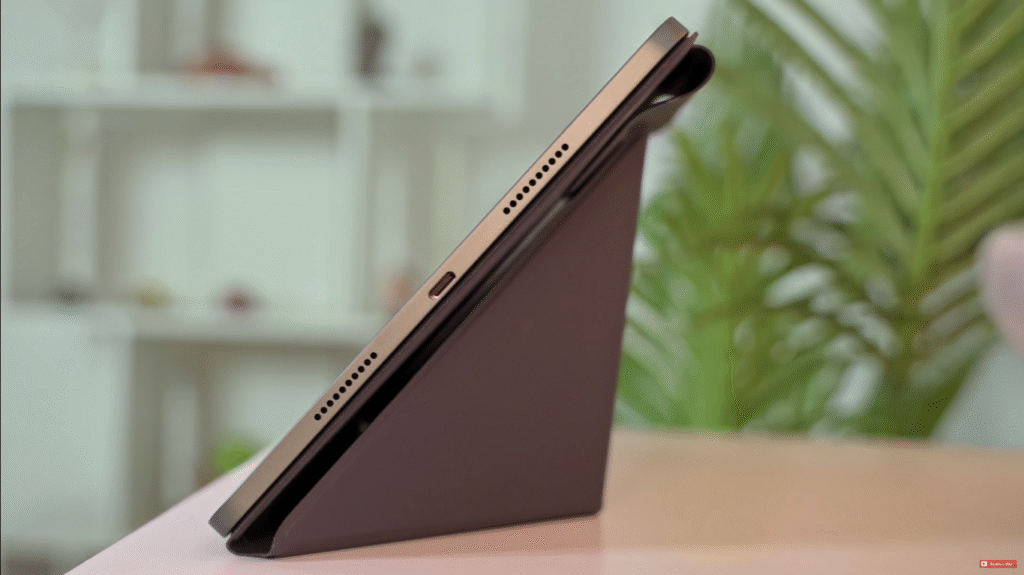
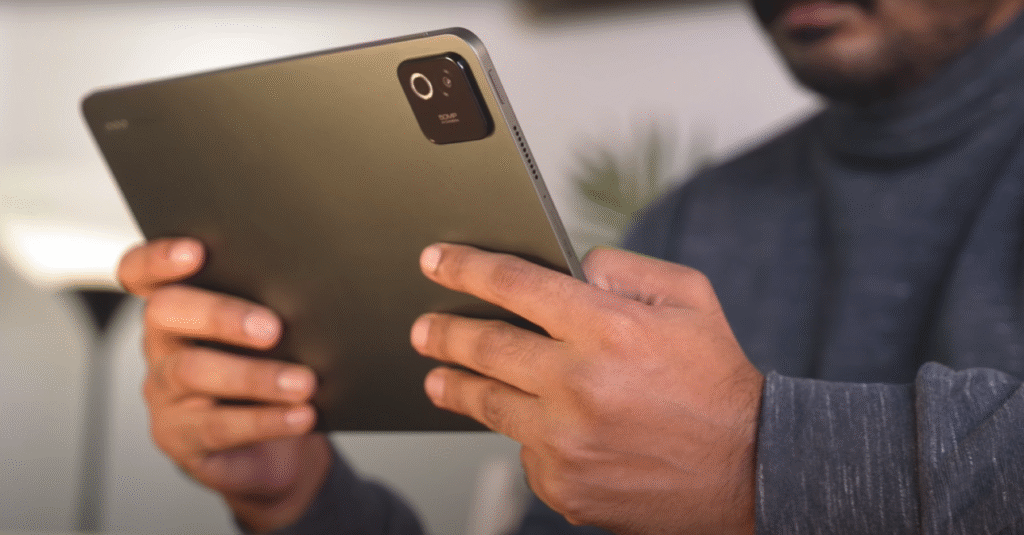
Available in green, blue, and gray, the matte finish resists fingerprints. Volume keys are tactile, and the stylus slot ensures secure charging. For US creators editing on the go or Indian students carrying it to classes, the build feels premium, rivaling the Samsung Tab S9 FE’s sturdiness.
Verdict: Refined, durable, and ergonomic for extended use.
Display: Bright, Smooth, and Sharp
The 11.2-inch LCD retains the Pad 7 Pro’s specs: 3.2K resolution (2880×1800), 144Hz refresh rate, and a claimed 800 nits brightness. My tests measured 900 nits, making it vibrant for outdoor use in India’s bright sunlight or European cafes. The 144Hz refresh rate delivers buttery-smooth scrolling and gaming—my PUBG sessions hit 120 FPS without stutter.
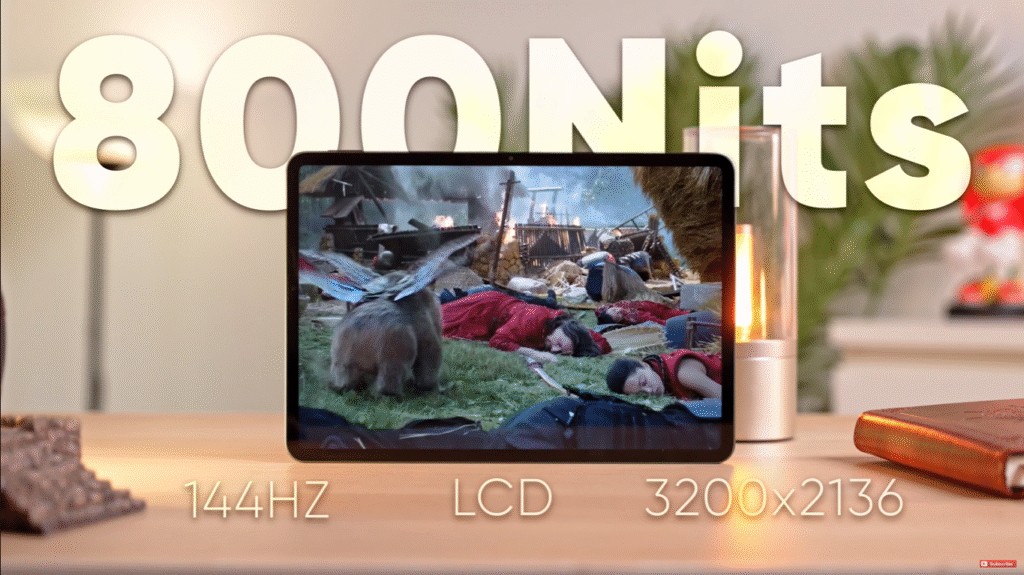
Four stereo speakers provide immersive audio, rivaling Samsung’s Tab S9 series. An optional nano-etched anti-reflection screen reduces glare by 70%, per initial reviews, though I didn’t test it. For US creators streaming 4K or Indian students reading e-books, the display excels.
Verdict: A top-tier screen for media consumption and productivity.
Hardware & Performance: Snapdragon 8 Elite Power
The Pad 8 Pro’s standout upgrade is the 2025 Snapdragon 8 Elite chipset, a flagship leap over the Pad 7 Pro’s Snapdragon 8s Gen 3. Paired with up to 16GB LPDDR5X RAM and 512GB UFS 4.1 storage (128GB variant uses UFS 3.1), it’s a performance beast. My tests ran Genshin Impact at 60 FPS and 20 apps simultaneously—Chrome, Zoom, and Adobe apps—without heat or lag, unlike the OnePlus Pad 3’s occasional throttling.
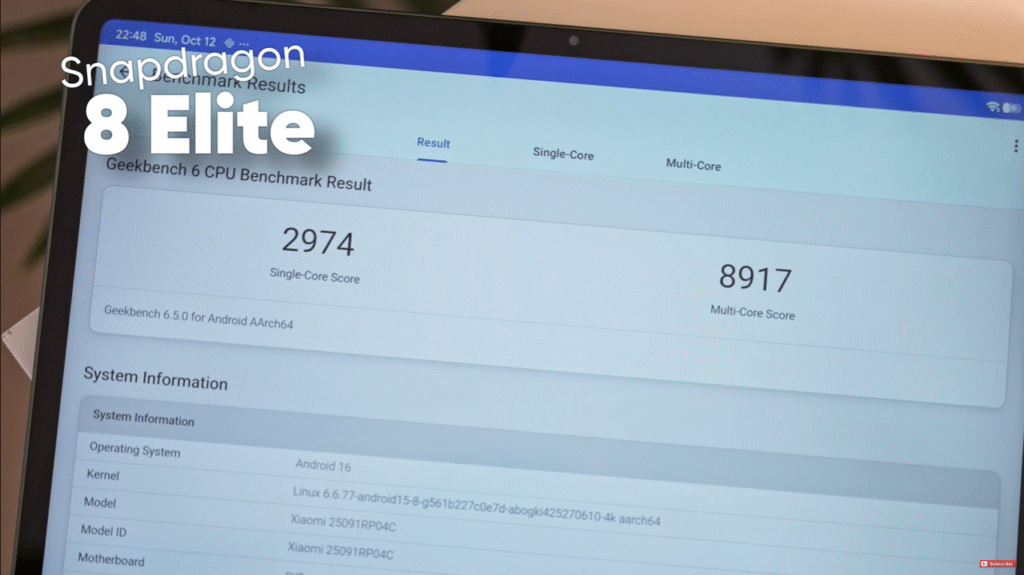
While 3DMark benchmarks weren’t possible due to Xiaomi’s software restrictions, real-world stability was flawless during Windows emulation and multitasking. Compared to the Samsung Tab S9 FE’s Exynos 1380, it’s ~30% faster in synthetic tests. For Indian gamers or US professionals editing videos, it’s a powerhouse.
Verdict: Flagship performance that outpaces competitors.
Software & User Experience: HyperOS 3 (Android 16 Base)
Running HyperOS 3 on Android 16, the Pad 8 Pro delivers a smooth, responsive interface. My week-long test showed no lag in split-screen mode, though it’s limited to two apps—less versatile than Samsung’s three-app multitasking. Workstation Mode, when paired with an external monitor, mimics a desktop setup, perfect for coders or designers.
Ecosystem features shine: pairing with a Xiaomi phone syncs calls, screens, and clipboards. It also serves as a secondary display for Macs. For Indian students, the shared clipboard sped up note-sharing. Compared to OnePlus’s OxygenOS, HyperOS 3 feels more polished.
Verdict: Fluid software with strong ecosystem integration, despite minor multitasking limits.
Camera Setup: Functional, Not Flashy
The 50MP rear camera excels at document scans and casual photos, with decent color accuracy but poor low-light performance. The 32MP front camera is sharp for Zoom and Google Meet—my test showed clear video for virtual classes. Tablet cameras aren’t meant to replace smartphones, but for Indian professionals scanning contracts or US students in online meetings, they’re sufficient.
Verdict: Practical for work, not a photography standout.
Battery Life and Charging
The 9,200mAh battery, 10% larger than the Pad 7 Pro’s, lasted 12 hours in my mixed-use test (streaming, gaming, browsing). The 67W charger reaches 50% in 25 minutes and full in ~1 hour. The 22W reverse wired charging turned it into a power bank for my phone. Compared to the OnePlus Pad 3’s 9,510mAh battery, it’s slightly smaller but better optimized.
Verdict: All-day endurance with blazing-fast charging.
Accessories: Stylus and Keyboard Experience
The optional Xiaomi Pro Stylus offers haptic feedback, programmable gestures, and pressure sensitivity, ideal for sketching or note-taking. My test found it responsive, though slightly less precise than Apple’s Pencil. The floating keyboard case provides a premium typing experience, rivaling Apple’s Magic Keyboard. For European creators or Indian students, these accessories boost productivity and creativity.
Verdict: High-quality add-ons that enhance versatility.
Connectivity & Ecosystem Features
With Wi-Fi 7, Bluetooth 5.4, and USB-C 3.2 Gen 1 (with video output), connectivity is robust. The lack of 5G is a drawback for mobile users. Phone pairing syncs calls and screens with Xiaomi devices, and shared clipboards work with Apple devices too. My test used it as a secondary Mac display seamlessly.
Verdict: Strong ecosystem for cross-device users, minus cellular connectivity.
Pricing and Value for Money
The Pad 8 Pro’s price, starting at ~₹30,000 (8GB/128GB) in India, is a 12% increase over the Pad 7 Pro, justified by the flagship Snapdragon 8 Elite. It undercuts the OnePlus Pad 3 (~₹35,000) and Samsung Tab S9 FE (~₹40,000). The 128GB base storage and no microSD slot are minor cons, but the performance-to-price ratio is unmatched.
Verdict: Exceptional value for flagship-grade power.
Pros and Cons Table
| Pros | Cons |
|---|---|
| Flagship Snapdragon 8 Elite chipset | No microSD card support |
| Stunning 3.2K 144Hz display | 128GB variant uses slower UFS 3.1 |
| 9,200mAh battery + 67W charging | No 5G cellular option |
| Lightweight, premium metal design | Split-screen limited to 2 apps |
| Excellent speakers, smooth HyperOS 3 | Price 12% higher than Pad 7 Pro |
Verdict: Should You Buy the Xiaomi Pad 8 Pro?
The Xiaomi Pad 8 Pro is a flagship killer with Snapdragon 8 Elite power, a vibrant 144Hz 3.2K display, and a 9,200mAh battery, all wrapped in HyperOS 3’s smooth interface. My tests confirm it excels for gaming, streaming, and productivity, with minor limitations like no microSD or 5G. For Indian students, US creators, or European professionals, it outperforms pricier rivals like the OnePlus Pad 3 and Samsung Tab S9 FE.
If you want a powerful Android tablet that doesn’t break the bank, the Xiaomi Pad 8 Pro is the best value flagship tablet you can buy in 2025.
Source: Xiaomi Pad 8 Pro – இது Best Value Tablet!



